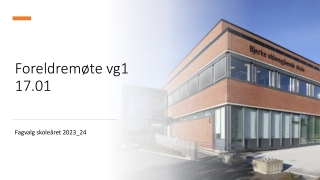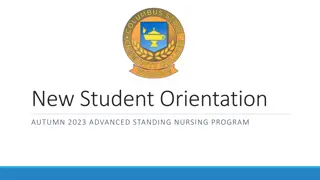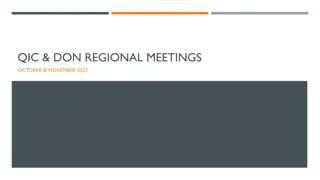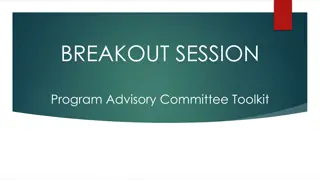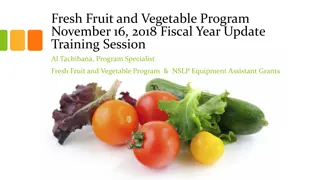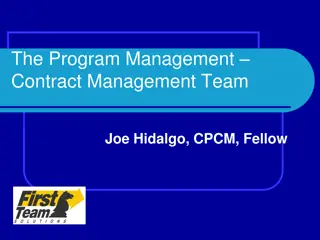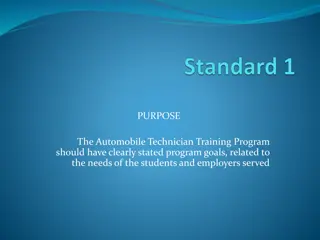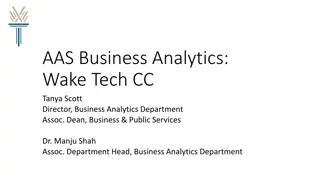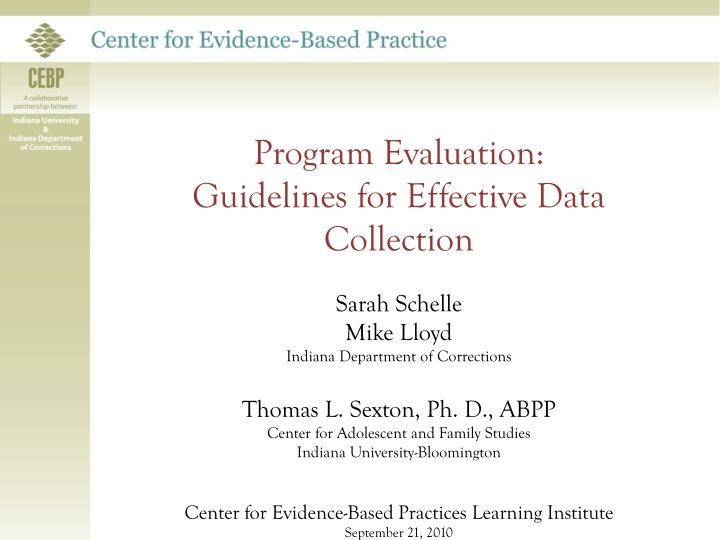
Effective Data Collection Guidelines for Program Evaluation
Learn about best practices for data collection in program evaluation to improve outcomes in community corrections. Find out why good data leads to better services and how feedback drives positive change.
Uploaded on | 0 Views
Download Presentation

Please find below an Image/Link to download the presentation.
The content on the website is provided AS IS for your information and personal use only. It may not be sold, licensed, or shared on other websites without obtaining consent from the author. If you encounter any issues during the download, it is possible that the publisher has removed the file from their server.
You are allowed to download the files provided on this website for personal or commercial use, subject to the condition that they are used lawfully. All files are the property of their respective owners.
The content on the website is provided AS IS for your information and personal use only. It may not be sold, licensed, or shared on other websites without obtaining consent from the author.
E N D
Presentation Transcript
Program Evaluation: Guidelines for Effective Data Collection Sarah Schelle Mike Lloyd Indiana Department of Corrections Thomas L. Sexton, Ph. D., ABPP Center for Adolescent and Family Studies Indiana University-Bloomington Center for Evidence-Based Practices Learning Institute September 21, 2010
Program Evaluation. Evidence based Practices: Require good data Data is feedback Feedback helps change practice
Why? Who Clients of Community Corrections Practices Community Corrections Components CC Services Outcomes Program Completion Recividism Improvement in Client Functioning Change in risk and protective factors
Feedback --- Practice Cycle Community Corrections Component (list) CC Service Outcome -Completion Rates -Functioning Changes -Recividism Change -elimination of a component -addition of a service -change in the profile in way it is delivered
Feedback --- Practice Cycle Community Corrections Component Electronic Monitoring Outcome -67% completed -only small changes in R & P Factors -40% recidivated CC Service (Assessment/Thinking for a change) Change -Different assessment -Different match of Assessment profile to component -elimination of the component
Good Data mean Good Services What works for whom? Which components/services/combinations work? Which component, service, or combination is best for which person What needs to change? Different components, services? Different delivery of these Different match with Client
THE NEW DATA REPORTING METHOD: OFFENDER SPECIFIC DATA Sarah Schelle, Research Analyst Indiana Department of Correction (317) 233-4764
REASON FOR CHANGE IN FORMAT More powerful data Measure outcomes Justify funding levels Chances for Grant Funds Combine recidivism at State and Local Levels Just makes good sense
DATA ELEMENT CATEGORIES Demographics Assessment Information Sentencing Information Component Information Program/Treatment Information Miscellaneous
Demographics First Name Last Name Middle Initial Social Security Number (Last 4 Digits) Sex Race Date of Birth
Assessment Information Assessment Score Assessment Type Assessment Date
Sentencing Information Sentencing Charge Sentence Level Length of Sentence
Component Information Component Name Component Start Date Component End Date Component Referral Type
Program Information Program/Treatment Name Program/Treatment Begin Date Program/Treatment End Date Program/Treatment End Type
Miscellaneous County Code Community Corrections Start Date Community Corrections End Date Community Corrections Completion Type Education Level Employment Recidivism Veteran DOC Number Driver s License Status
REPORTING FORMAT Comma Separated Value File (CSV) Based on Template file do not alter the template
REPORT DUE ON THE 15TH DAY AFTER THE REPORTING PERIOD HAS ENDED
CHANGES IN REPORTING No longer submit the paper form Looking at all offenders served in time period Will add variables as needed Will start to validate submissions File Reviews
COUNTIES WITH CASE MANAGEMENT SYSTEMS Currently drafting queries to make data extraction as easy as a click of a button Once Queries are available, you will be contacted by the Case Management System Company you are contracted with
DATA RELEASE ISSUES CONFIDENTIALITY Diane Mains, Staff Attorney, Indiana Judicial Center Provided us with an Audit Agreement data release form Data Security All information will be held on a secured State server Raw data will not be shared with any other agency without permission by county Each county must sign it to be able to report IDOC will maintain a signed copy


